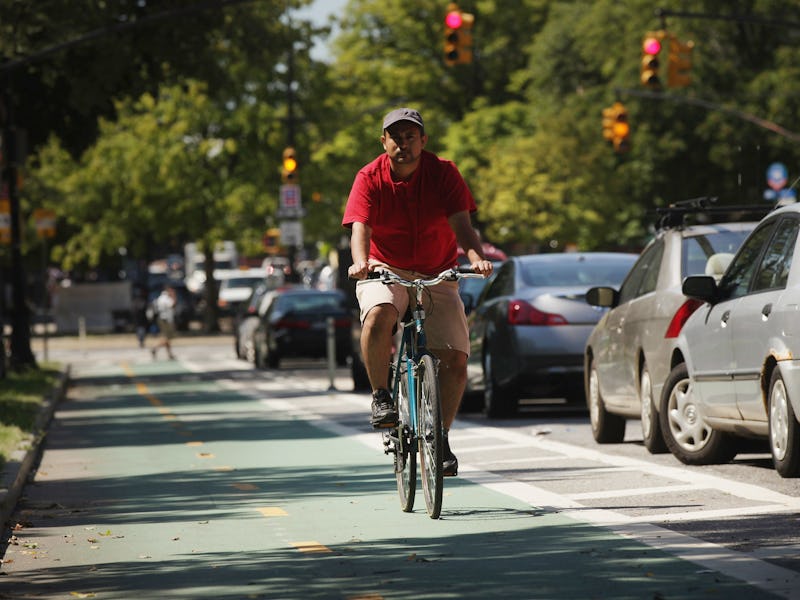Google Says Self-Driving Cars Will Save Scores of Cyclists a Year
The company focuses on the 2 percent of cyclist deaths per year.

Google’s self-driving cars are learning how to avoid cyclists, the company writes in its monthly self-driving car report, released this week. Which is important, because although the vast majority of people on the road are on or in a motorized vehicle, accidents involving cyclists happen far too often.
More than 50,000 cyclists were injured in an accident with a motor vehicle in 2014, and 726 were killed, the National Highway Traffic Safety Administration found. That is more than 2 percent of total vehicle fatalities, and the percent has been increasing since 2005.
So Google taught its self-driving cars to recognize cyclists of all shapes and sizes as well as their hand signals.
The sensors encasing Google’s cars can read when a cyclist will move into the lane to avoid a parked car with an open door. Sometimes stuff just gets in the way. Cyclists can thank Google for keeping them in mind when it comes to avoiding all of the objects, people, and places in bike lanes.
But what if one of Google’s Fiat minivans gets in the middle of a bike race, and a swarm of more than 100 cyclists start doing laps around the van in some sort of anti-vehicle protest? The sensors are equipped to handle that as well.
Recognizing how cyclists get around is an important factor for the future of autonomous vehicles. Riding a bike is becoming increasingly popular — especially in urban areas. New York City’s Transportation Department found that 778,000 New Yorkers ride at least several times a month, and more than 400,000 trips are taken through the city every day. The number of people who ride a bike to work increased 75 percent from 2010 to 2014 in Brooklyn alone.
What it looks like when more than 100 Google employees ride around a self-driving car.
New York isn’t the only place where more people are riding a bike. With more riders comes more fatalities. While the total number of vehicle related fatalities (both car and bicycle) have gone down since 2005, cyclist fatalities have increased or stayed the same. In 2005, a total of 786 cyclists were killed, which was 1.8 percent. In 2014, the latest year for which stats are available, 726 people died. The number is smaller, but the percent of total deaths was higher at 2.2 percent.
Cyclist safety hasn’t increased alongside vehicle safety. It’s something that Elon Musk pointed out in his latest Twitter rant against the Tesla haters.
Autonomous vehicle technology will save lives — maybe even half a million per year. But mobility is more than people riding in cars, and Google is working to make sure their autonomous cars can do more than patiently honk at the cyclist taking up more than his fair share of the road.